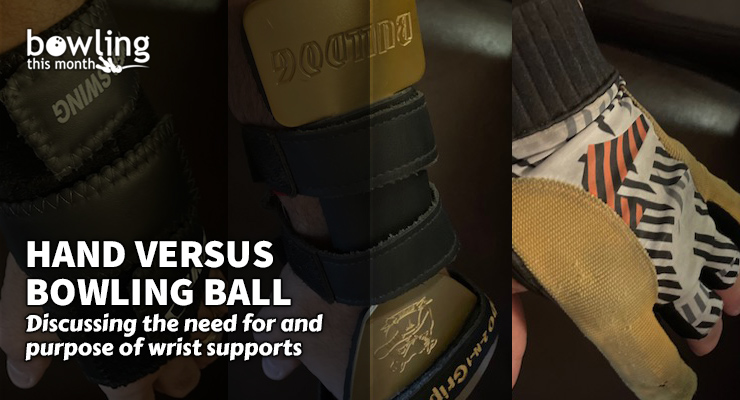Since the inception of many sports, the equipment has changed—sometimes dramatically. The impact of these changes upon a given sport is often a hotly debated topic. In this regard, bowling is certainly no different. From drastic changes in bowling ball construction, design, and materials, to materials used in bowling lanes, the oils used on those lanes, and electronic coaching tools, all of these have had an impact on our sport and will continue to do so. Next to bowling balls themselves, wrist supports are a hot-button issue—if bowling can be said to have one! Let us take a long, hard look at these devices and see if they benefit our game.
Human hand and wrist versus heavy bowling ball; this doesn’t sound like a fair contest, does it? It seems inevitable that, barring significant wrist and hand exercises, a bowler would find his or her wrist collapsing or at least “breaking back” at some point in the approach. While this is a valid technique for either spare shooting or bowling on drier lanes (this method is known as “killing the shot” for good reason), breaking the wrist backward causes a significant reduction in hook. Regardless of whether the bowler does this intentionally or accidentally, the result is the same.
Wrist supports, therefore, were originally designed to help bowlers not break their wrists backward so that their intended release retained its hook. As we will discuss, there are many different designs of wrist supports, yet all of them provide rigid supports along the back of the hand, extending just past the wrist, specifically designed to prevent this from occurring.
Another intended purpose of wrist supports is to assist bowlers with the core skill of repeating shots. It takes a great deal of training and muscle memory to successfully learn how to repeat shots, ...
This article is only available to Bowling This Month subscribers. Click below to get instant access to this article and all of our other premium instructional content.
Subscribe to Bowling This Month
Already a Bowling This Month subscriber? Click here to log in.
